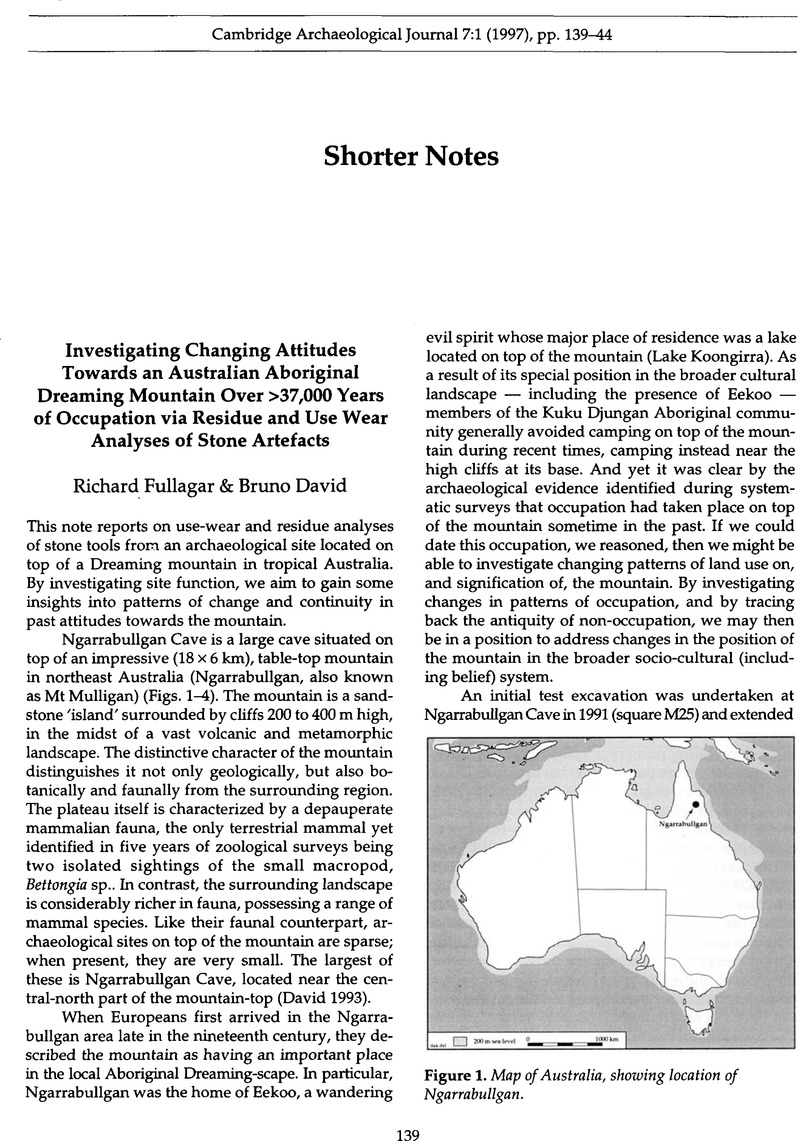Crossref Citations
This article has been cited by the following publications. This list is generated based on data provided by Crossref.
David, Bruno
and
Wilson, Meredith
1999.
Re-Reading the Landscape: Place and Identity in NE Australia During the Late Holocene.
Cambridge Archaeological Journal,
Vol. 9,
Issue. 2,
p.
163.
Ulm, Sean
and
Reid, Jill
2000.
Index of Dates from Archaeological Sites in Queensland.
Queensland Archaeological Research,
Vol. 12,
Issue. ,
p.
1.
Haslam, Michael
2006.
An archaeology of the instant?.
Journal of Social Archaeology,
Vol. 6,
Issue. 3,
p.
402.
Denham, Tim
Fullagar, Richard
and
Head, Lesley
2009.
Plant exploitation on Sahul: From colonisation to the emergence of regional specialisation during the Holocene.
Quaternary International,
Vol. 202,
Issue. 1-2,
p.
29.
Yates, A.
Smith, A.M.
Parr, J.
Scheffers, A.
and
Joannes-Boyau, R.
2014.
AMS dating of ancient plant residues from experimental stone tools: a pilot study.
Journal of Archaeological Science,
Vol. 49,
Issue. ,
p.
595.
Cnuts, Dries
Tomasso, Sonja
and
Rots, Veerle
2018.
The Role of Fire in the Life of an Adhesive.
Journal of Archaeological Method and Theory,
Vol. 25,
Issue. 3,
p.
839.
Langley, Michelle C.
Clarkson, Chris
and
Ulm, Sean
2019.
Symbolic expression in Pleistocene Sahul, Sunda, and Wallacea.
Quaternary Science Reviews,
Vol. 221,
Issue. ,
p.
105883.
Maloney, Tim Ryan
and
Dilkes-Hall, India Ella
2020.
Assessing the spread and uptake of tula adze technology in the late Holocene across the Southern Kimberley of Western Australia.
Australian Archaeology,
Vol. 86,
Issue. 3,
p.
264.
Turnbull, Molly
Parker, Adrian G.
and
Jankowski, Nathan R.
2023.
The history of phytolith research in Australasian archaeology and palaeoecology.
Vegetation History and Archaeobotany,
Vol. 32,
Issue. 6,
p.
655.
Rots, Veerle
Cnuts, Dries
Coppe, Justin
Lokker, Anika
and
Oberholzer, Ronè
2024.
No Solid Foundation for the Use of Ochre-based Compound Adhesives at Le Moustier.
Journal of Paleolithic Archaeology,
Vol. 7,
Issue. 1,



